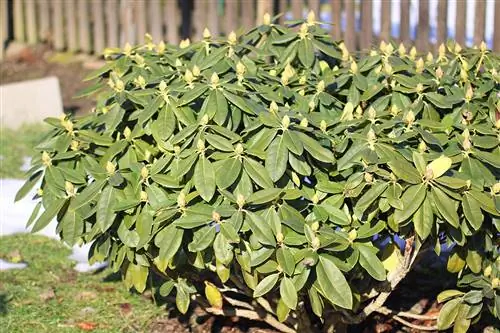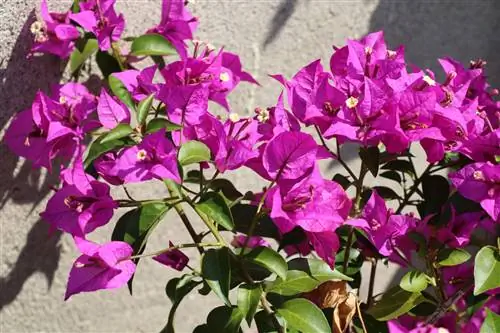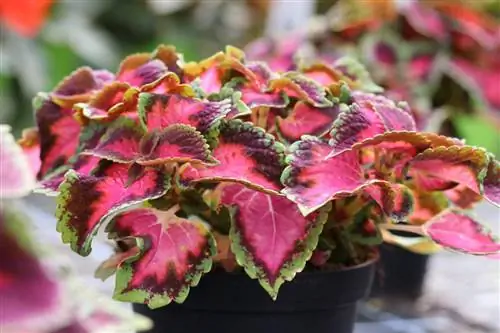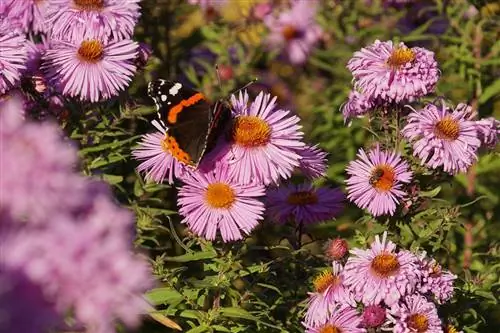- Author admin [email protected].
- Public 2023-12-17 03:39.
- Last modified 2025-01-24 12:45.
With the exception of a few tropical varieties, rhododendrons are considered hardy and can therefore be overwintered in local regions without any problems. We have the 6 best tips to help you overwinter the plant!
Variety
The choice of variety has a decisive influence on the overwintering of rhododendrons, because some varieties cope better with the low temperatures in winter than others. Tropical varieties are less likely to overwinter, whereas the following specimens usually have little or no problems with sub-zero temperatures:
- subgenus Azaleastrum
- subgenus Hymenanthes
- subgenus Therorhodia
- ‘Catawbiense Grandiflorum’
- ‘Germania’
Root protection
Many rhododendrons are hardy, but their roots are very shallow in the ground. The roots are correspondingly close to the soil surface. In the cold season, this poses a risk to the plants because frost penetrates from the soil surface into the soil and reaches the roots relatively quickly. To prevent frost damage to the root system, the root ball should be protected accordingly by covering the soil surface.

The hobby gardener has different options to choose from:
- Small branches of coniferous trees
- Oak Leaves
- Crushed bark of conifers
- Combination of all
Sun protection
In the winter months it is usually very cold, but the sun should not be underestimated. If the ornamental shrub is exposed to direct sunlight at temperatures below zero, there is a risk of drought damage! When there is frost, the plant is unable to compensate for evaporation by absorbing water. The result: the leaves become dry and brown. To prevent this from happening, the plant should be provided with sun protection in winter.
The following variants are suitable for this:
- Adorn sail made of wooden posts and fabric
- Reed mat
Tip:
A sun sail is also ideal as a windbreak!
Fertilize and water
There are also a few things to consider when it comes to care when overwintering the rhododendron: While the plant was last fertilized around the beginning of October, it should continue to be watered in the winter months. Most species are evergreen plants that lose a lot of moisture through their leaves even in winter. It is not uncommon for the ornamental shrub to curl up its leaves in the winter months - this is usually a sign of a lack of water in the soil. In this case, it is advisable to water the plant the next time it warms up.
It is also worth considering the following tips:
- Moderate watering before frost begins
- Water with low-lime water
- Avoid waterlogging at all costs
Overwintering rhododendron in a pot
If you cultivate the rose tree in a pot, you should place it in a protected location in winter. Outdoors, for example, the north wall of the house or a corner of the garden protected by hedges is suitable for this. The shade of a gazebo is also suitable as a winter quarters for the plant. It is important that the location is as sheltered from the wind as possible and without direct sunlight. It is best to place the vessel on a thick Styrofoam mat or on special feet.
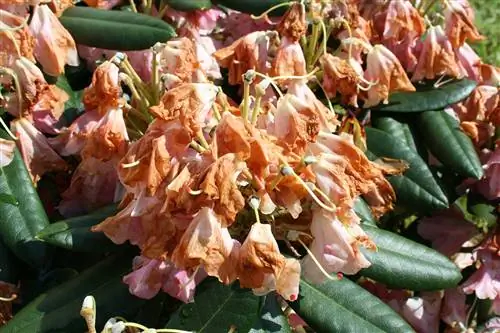
The rose tree should then be watered before it is protected as follows:
- Apply foil or Styrofoam layer around the pot
- Wrap the container with jute or coconut mat
- Additionally protect soil from above
- It is best to cover with brushwood or oak leaves
Note:
The rose tree can also overwinter indoors. A bright and cool room with a room temperature of 5 to 10 degrees Celsius is best suited for winter quarters.
Care
In terms of care, the rose tree in the pot is quite undemanding because it just wants to be watered. Here too, it is important to avoid waterlogging. The container should have a drainage hole so that excess water can drain away. If the plant curls its leaves, this is usually a sign of frost. As a rule, the leaves curl up again as soon as it gets warmer.

